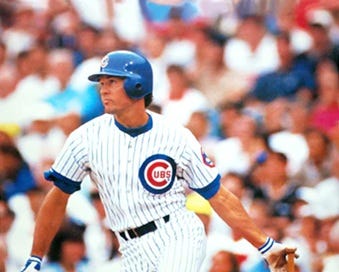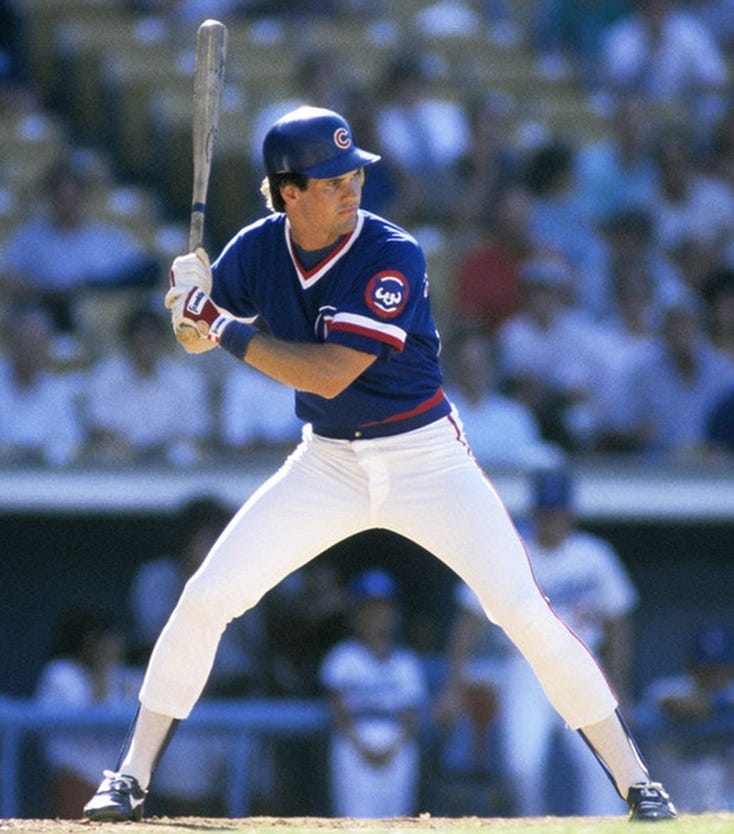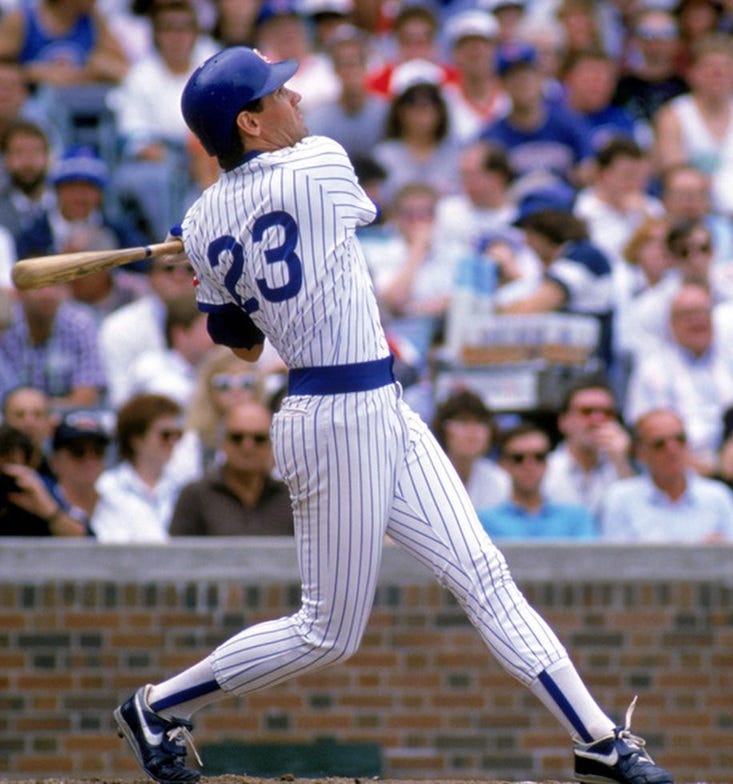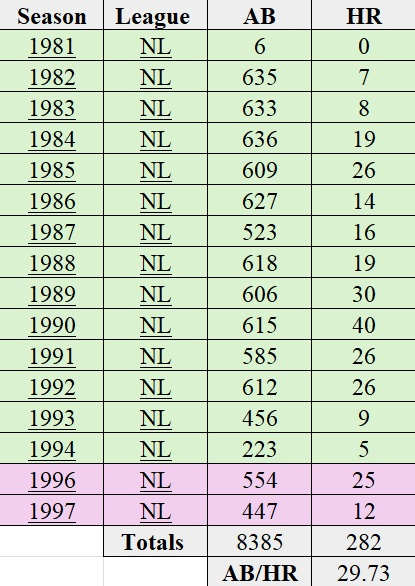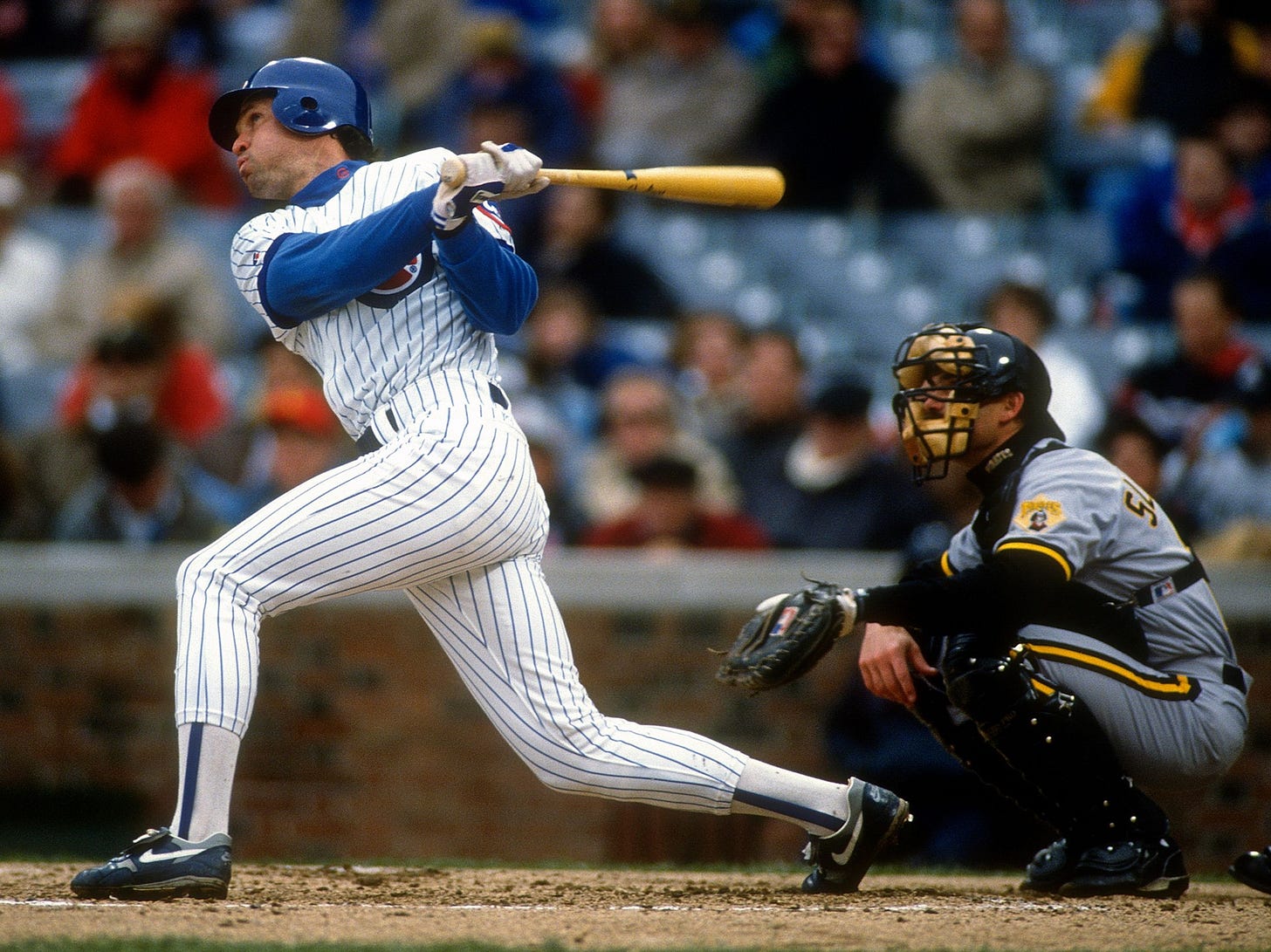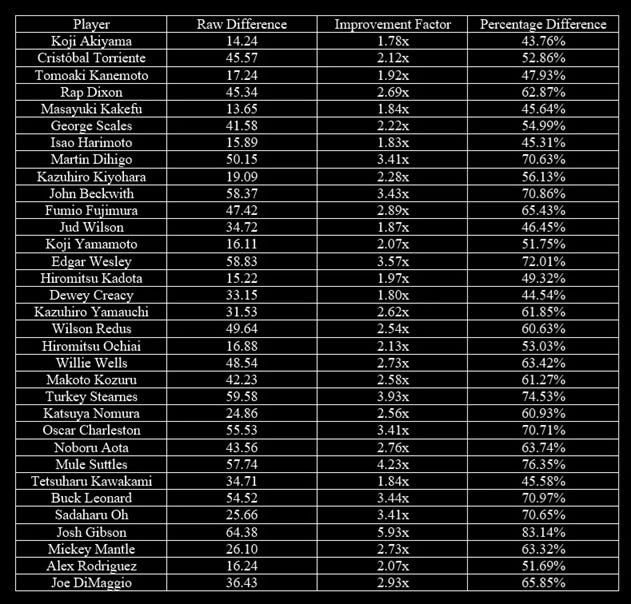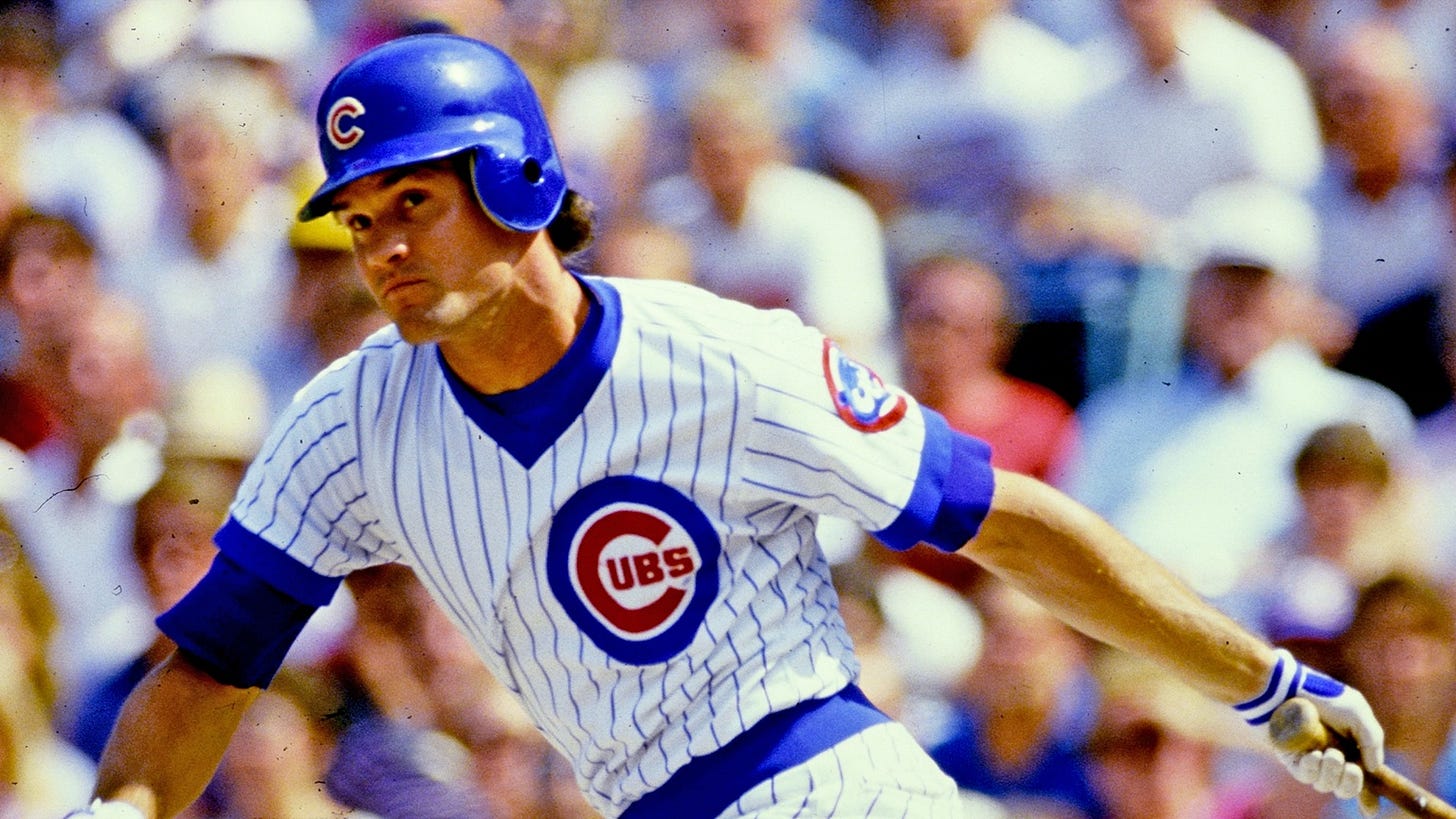This project aims to determine the greatest home run hitter of all time by comparing each slugger’s statistics to the average of their era using three formulas. The final adjusted stats will then be used to compare them head-to-head with other all-time greats.
Ryne Sandberg will be the next legendary MLB slugger examined in this study. For a detailed biography of Sandberg, please click here.
Before analyzing Sandberg's career numbers, it's essential to recognize his accomplishments as a hitter. Let's examine his rankings in key hitting statistics throughout his career. Sandberg appeared on the MLB leaderboards in the following categories:
1984: #8 (.314)
1984: #8 (.520)
1989: #10 (.497)
1990: #4 (.559)
1992: #10 (.510)
1990: #8 (.913)
1984: #2 (114)
1985: #6 (113)
1989: #3 (104)
1990: #2 (116)
1991: #10 (104)
1984: #4 (200)
1985: #10 (186)
1990: #5 (188)
1992: #7 (186)
1984: #4 (331)
1985: #8 (307)
1989: #8 (301)
1990: #1 (344)
1992: #3 (312)
1984: #8 (36)
1984: #1 (19)
1988: #9 (8)
1992: #10 (8)
1989: #9 (30)
1990: #2 (40)
1984: #4 (74)
1990: #3 (73)
1992: #10 (66)
1984: #3 (126)
1989: #10 (109)
1990: #4 (124)
1992: #6 (117)
1991: #10 (259)
1990: #6 (15.38)
Best Offensive Seasons
1984 shines for its combination of high batting average (.314), speed (19 triples), and overall production (200 hits, 331 total bases, 126 runs created). It’s a well-rounded hitting year.
1990 stands out for power, with 40 home runs, a league-leading 344 total bases, and a .559 slugging percentage. His OPS (.913) and runs scored (116) suggest a more impactful offensive presence compared to 1984’s broader but less power-focused stats.
Now that we have a clear understanding of Sandberg's accomplishments, we can proceed with the career analysis. According to Baseball Reference, Sandberg’s official statistics reveal a total of 282 home runs over 8,385 at-bats resulting in an average of at-bats per home run 29.73 (AB/HR).
Ryne Sandberg played in the National League (NL) from 1981-1997 (he did not compete in the 1995 season). When aggregating the statistics from each of the seasons Sandberg competed in, the league totals include 1,055,309 at-bats and 24,193 home runs, resulting in an average of 43.62 at-bats per home run (AB/HR).
With this data, we can evaluate how Sandberg’s performance compared to the average NL hitter of his era.
Raw Difference: 13.89
Formula: League Average – Player Career AverageImprovement Factor: 1.47x
Formula: League Average / Player Career AveragePercentage Difference: 31.84%
Formula: (League Average – Player Career Average) / League Average × 100%
AB/HR
Sandberg’s career at-bats per home run (AB/HR) of 29.73, set against the NL’s average of 43.62 over the span of his playing years (1981–1997, excluding 1995), highlights a significant edge over his peers.
Raw Difference
Sandberg needed 13.89 fewer at-bats to hit a home run compared to the typical NL hitter of his era. This is a substantial gap, underscoring his efficiency and power at the plate.
Improvement Factor
For every home run the average NL batter hit, Sandberg was hitting roughly 1.47. That’s a remarkable edge for a second baseman, a position not traditionally known for power hitting.
Percentage Difference
Sandberg’s AB/HR was 31.84% lower (better) than the league’s, a clear indicator of his superior ability to turn at-bats into home runs. For context, an average NL hitter would need 43.62 at-bats to go yard, while Sandberg was doing it in just under 30—about two-thirds of the time. This efficiency paints a picture of a player who outperformed expectations for his position and era.
Sandberg’s numbers are especially impressive when you consider the broader context of 1980s and early 1990s baseball. Power was more concentrated among outfielders and first basemen, not middle infielders like Sandberg. His ability to post these stats while playing stellar defense (9 Gold Gloves) and stealing bases (344 career steals) makes his offensive output even more notable. Compared to the average NL hitter, Sandberg wasn’t just good—he was exceptional.
In our initial case study, we analyzed the careers of prominent Japanese and Negro League sluggers, alongside MLB greats Mickey Mantle, Alex Rodriguez, and Joe DiMaggio for comparison.
Now, let's compare Sandberg’s career statistics against these baseball legends to gain a clearer perspective on how he stacks up.
Ryne is in the statistical orbit of Koji Akiyama. Akiyama hit 437 home runs and had 7,997 at-bats. His Raw Difference was 14.24, with an Improvement Factor of 1.78x and a Percentage Difference of 43.76%.
Among the league leaders in home runs during the 1990s, we have analyzed the power-hitting careers of the following players:
Vladimir Guerrero (14.40/1.79x/44.23%)
Vinny Castilla (13.04/1.61x/37.95%)
Tino Martinez (12.08/1.58x/36.54%)
Shawn Green (10.13/1.47x/31.94%)
Sammy Sosa (20.59/2.42x/58.73%)
Sandbergs's career statistics (13.89/1.47x/31.84%) mirror those of Shawn Green.
If you find this content valuable and would like to support the ongoing studies and articles, your contributions via CashApp are truly appreciated.
Your support helps fund the tools, research, and time dedicated to these projects. Every contribution, no matter the size, plays an important role in keeping this work going.
If you're unable to contribute financially, sharing this article on your social media (X, Facebook, etc.), emailing it to a friend, or texting the link to a fellow baseball fan is just as valuable.
Thank you for your support!

